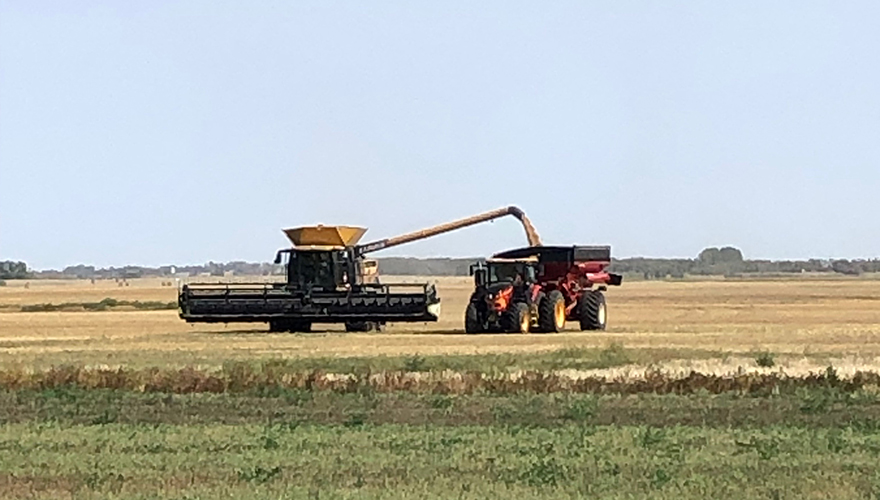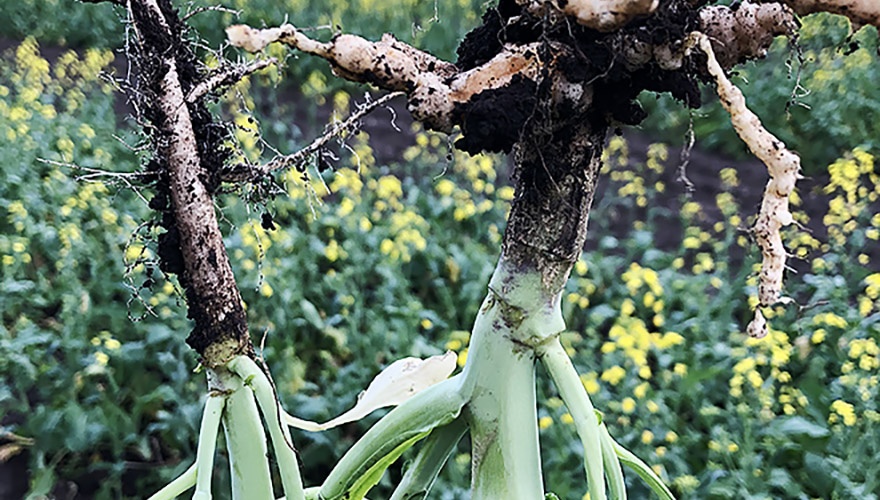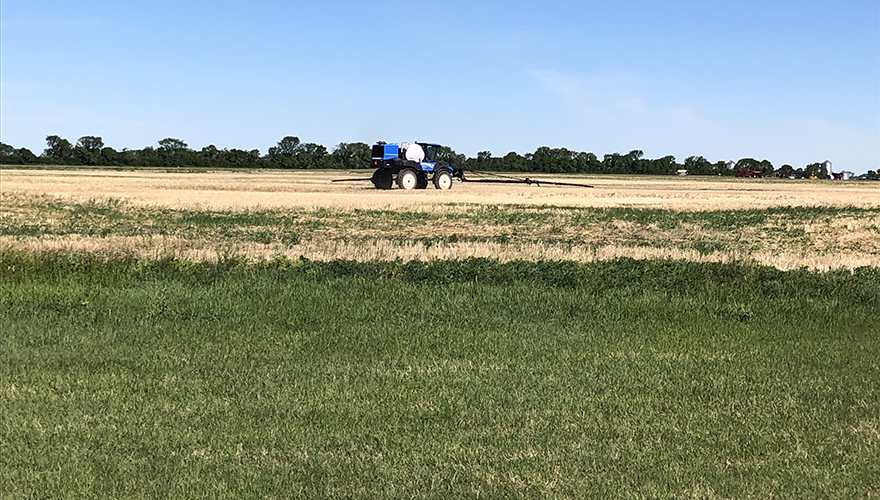Posted January 31, 2017
MANAGING FOR MAXIMUM RETURNS
While corn has been grown as a field crop in Western Canada for about 40 years, both interest and acres are on the rise. The primary drivers of this change are the recognition of the higher return per acre of corn compared to other cereals for grain, grazing and silage, as well as availability of new, early maturing hybrids.
BEST MANAGEMENT PRACTICES FOR NEW CORN GROWERS
When making a decision to add corn to the rotation in the Prairies, there are a few things to consider, says Wilt Billing, corn & soybean product line manager with Nutrien Ag Solutions Canada. Best management practices require growers to understand the needs of a corn crop and the demands of growing corn in their region.
“Hybrid selection, proper soil conditions at planting and timely weed control are the top three areas growers must focus on when first starting out with corn,” says Billing. “Plant nutrition, crop rotations and setting accurate yield goals are also key considerations.”
HYBRID SELECTION
Selecting the hybrid that is the right maturity for the specific region and recognizing the different maturity requirements when growing corn for grain, grazing or silage are critical first steps. Regional trials will provide growers with important local information to aid in this selection.
“Use multiple data sources, including all resources available and get comfortable with hybrid maturity ratings,” says Billing.
While most of the corn grown in Canada is for feed, there are differences to keep in mind between silage and grazing hybrids.
“For silage and grazing, the grower should select hybrids that don’t quite reach physiological maturity. Maturing basically seals the kernels off and the animal will have difficulty digesting the starch and getting the energy from it,” says Billing.
For grazing corn, selecting a hybrid that offers late season standability is important as the crop will remain standing sometimes well into the winter. Strong roots and stalks are crucial in helping the corn stay upright.
TURN UP THE HEAT
Heat is a crucial ingredient for corn to thrive so any management practices that help warm the soil will benefit production. Corn kernels require 50 corn heat units (CHU) to germinate so warm soils help corn emerge faster and reach target plant populations. Crop rotation is key.
“Planting corn after soybeans or other pulses is a good idea as pulses tend to leave a mellow soil that’s typically a little blacker than other crops, especially cereals. The mellow, dark soil warms up quicker in the spring, which is beneficial for corn establishment,” says Billing.
Any early season factors that help warm the soil will aid in corn maturity and increase yield potential. Corn development is 100 per cent heat driven until the reproductive stage of silking. During the reproductive stages, warm weather is less important and has little influence on crop development. Once the crop has reached maturity, weather again plays an important role as it influences the dry down significantly.
STAY AHEAD OF THE WEEDS
Corn doesn’t compete well with early weed pressure so early weed control is essential. Yield drops up to 15 per cent by the time grassy weeds reach about four inches. That loss increases dramatically by the time the weeds reach six to eight inches. As the majority of corn in Western Canada is Roundup Ready, early weed control is quite simple. Multiple applications may be required and glyphosate can be applied until the eight-leaf stage.
Growers can also choose a pre-emergent herbicide to allow the crop to get a head start on the weeds. Tank mixing herbicides is an essential step to control certain weeds in corn. The recommendation is to use at least two modes of action to reduce the risk of herbicide resistance developing. There are also new herbicide groups that make control of broadleaf weeds like volunteer canola and wild buckwheat a lot easier.
“Avoid certain group 2 and group 4 herbicides as their growth inhibiting characteristics can be detrimental to corn development,” adds Billing.
IT’S ALL ABOUT THE “N”
The application standard of N (nitrogen) ranges from one to one and a half pounds of N per bushel of grain, or an average of one and a quarter pounds per bushel as a guide.
“Producers who want to produce 150 bushel corn know it will require a lot of nitrogen,” says Billing. The key is to understand the growing area and realistic yield performance. Yield targets must take into account as well as past performance. “It’s important to be realistic. Increasing N will not move a grower’s corn yield beyond what is possible in their area,” says Billing.
Studies over the last 10 years are finding that the early maturing hybrids are staying healthier longer. There is now a higher demand for nitrogen uptake after tassel. A new standard is being set with research showing that corn now requires 65 per cent of its nitrogen before tasseling and 35 per cent later in the season. Delayed release nitrogen fertilizers should be considered as they are well-suited to corn production and the late season demand.
Following 4R nutrient stewardship management guidelines of right source, right time, right amount and right place, growers and agronomists need to find the balance of fall anhydrous, front-loading prior to planting, in-crop application prior to tasseling as well as manure management.
MANAGING RISK
Crop rotations are always a key management area for crop success.
“Avoid growing corn the year following canola. Canola doesn’t promote the development of mycorrhiza, an organism essential for phosphate uptake, in the soil. Corn has a high phosphate demand so there can be subtle yield differences based on rotation management,” says Billing. 10-15 per cent yield losses have been noted in recent studies.
PROTECTING THE INVESTMENT
One of the more serious issues for western Canadian corn growers is the European corn borer. Most of the corn hybrids in Canada include protection against this insect. Two modes of action have been developed for corn hybrids and the refuge requirement has been reduced to five per cent. Based on CFIA guidelines on packaging the refuge requirement is now included directly in the bag with the treated seed so growers may see “Refuge in bag” (or RIB) when purchasing their corn seed.
A LITTLE HIGH MAINTENANCE BUT WORTH IT
With the continually improving and early maturing hybrids, more western Canadian growers are looking to add corn to their rotation. There is certainly a lot to consider. Successful corn production requires strong genetics, seed treatments and warm soil to begin, early weed control and ongoing, substantial, well-timed applications of fertilizer. It is a high input crop but as Wilt Billing puts it, “There are very few crops in Western Canada that are yielding hundreds of bushels per acre.” Many producers on the Prairies are growing corn for grain and silage with great success.
FEATURED LINKS
NEWSLETTER
Want to stay caught up in all things agriculture? Sign up for the newsletter and get all the latest news straight to your inbox.
Canola Fertility
Posted Febrary 01, 2017






